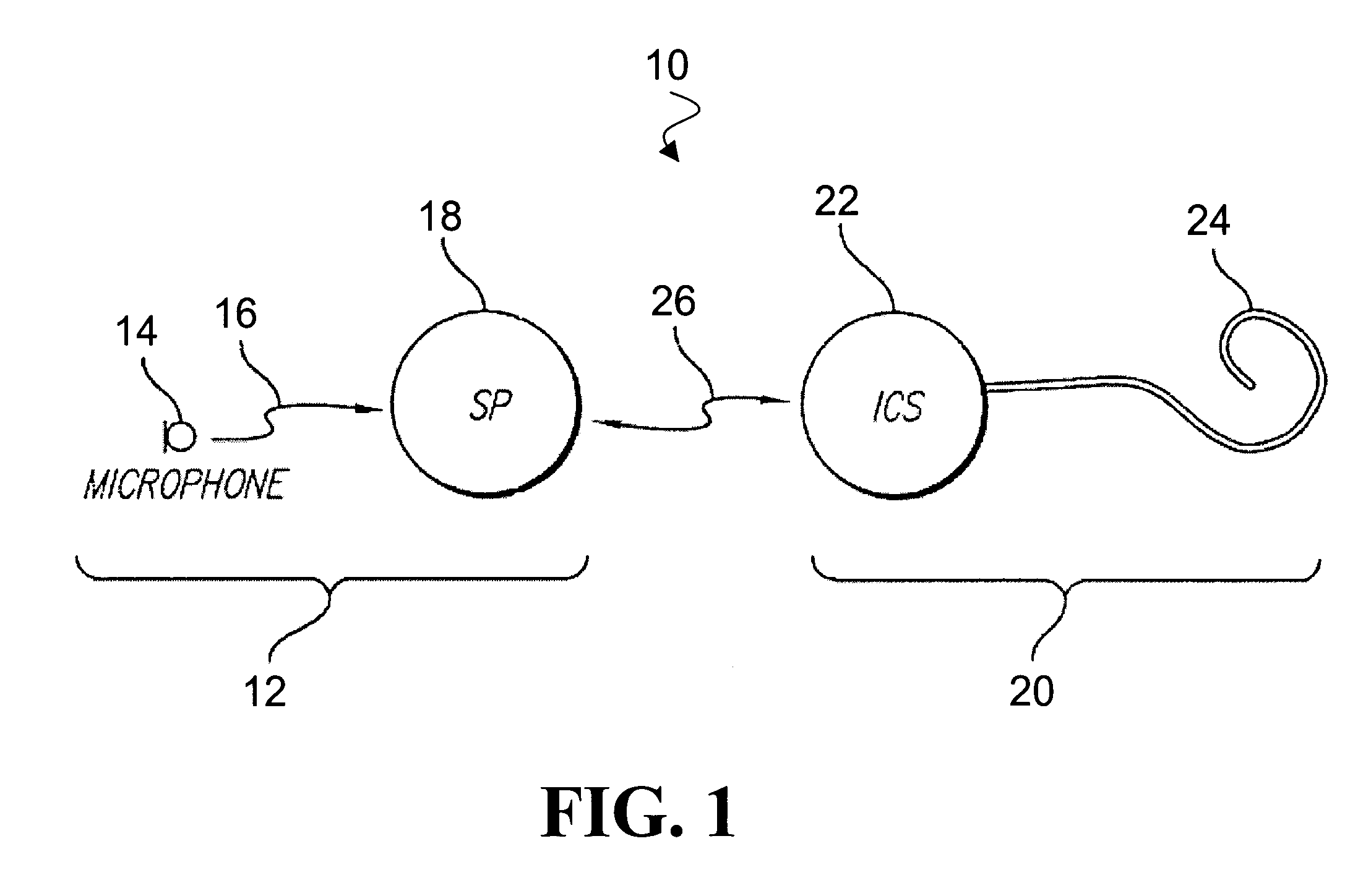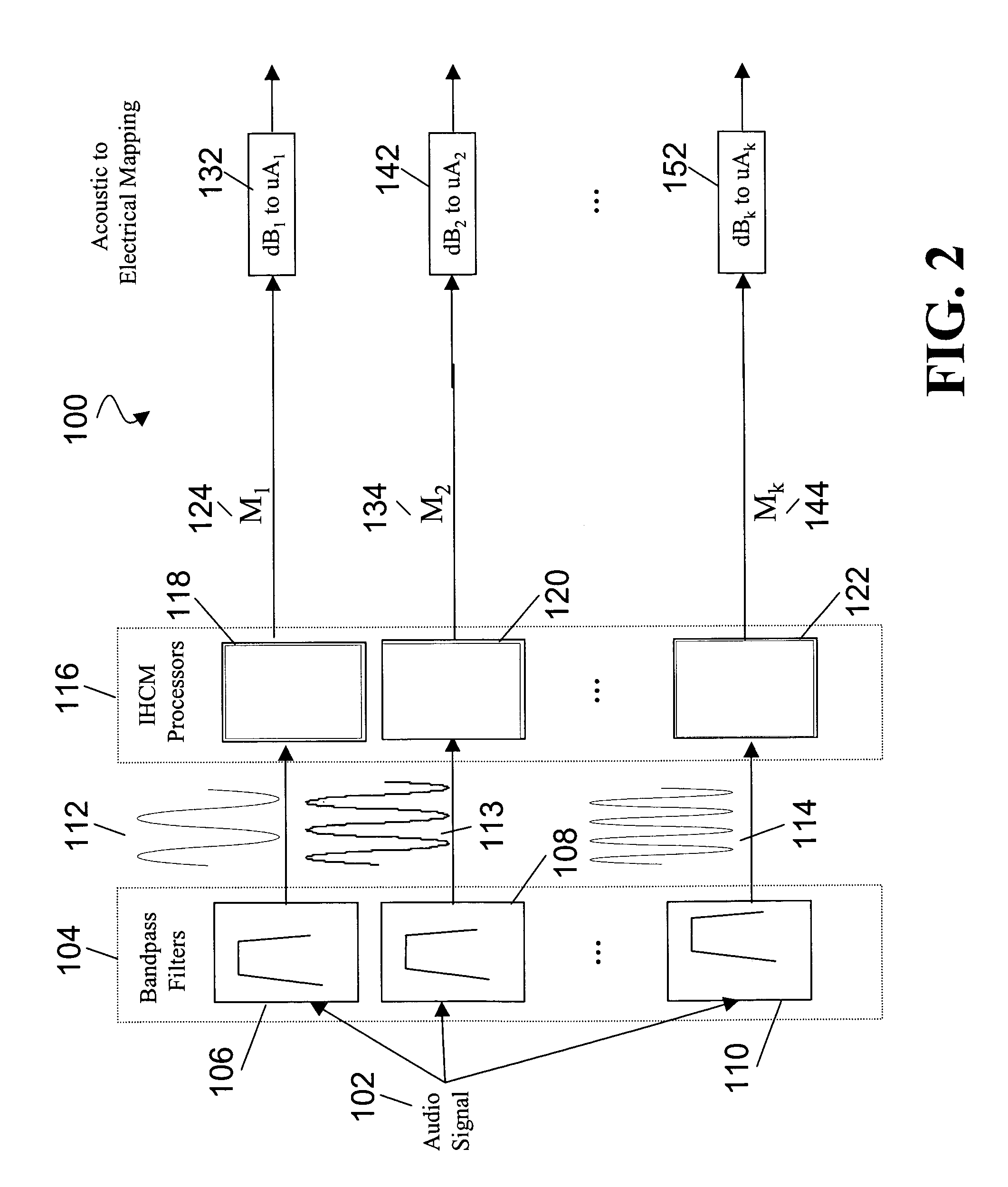Inner hair cell stimulation model for the use by an intra-cochlear implant
a cochlear implant and hair cell technology, applied in speech analysis, instruments, therapy, etc., can solve the problems of inability to restore hearing to the profoundly deaf, stimulation signals that do not necessarily accurately represent nerve signals, and initial attempts to restore hearing were not very successful, so as to improve sound clarity and speech recognition, and reduce the power consumption of the cochlear implant system
- Summary
- Abstract
- Description
- Claims
- Application Information
AI Technical Summary
Benefits of technology
Problems solved by technology
Method used
Image
Examples
Embodiment Construction
[0032]FIG. 2 presents a functional block diagram of a system arranged to implement a sound processing strategy. Such sound processing strategy can be implemented using any combination of circuitry and programmed instructions, including one or more of a programmable logic device, a field-programmable gate array, an application-specific integrated circuit, and a general purpose processor executing programmed instructions.
[0033]In the sound processing system 100, an audio signal 102 is provided as an input to a bank of bandpass filters 104, which separates the audio signal 102 into individual frequency bands or channels. For example, if the audio signal 102 is provided to a bank of K bandpass filters, then the audio signal 102 is separated into K individual frequency bands. In another implementation, different types and combinations of filters can be employed to separate the audio signal 102 into individual frequency bands, such as notch filters, high-pass filters, and low-pass filters...
PUM
 Login to View More
Login to View More Abstract
Description
Claims
Application Information
 Login to View More
Login to View More - R&D
- Intellectual Property
- Life Sciences
- Materials
- Tech Scout
- Unparalleled Data Quality
- Higher Quality Content
- 60% Fewer Hallucinations
Browse by: Latest US Patents, China's latest patents, Technical Efficacy Thesaurus, Application Domain, Technology Topic, Popular Technical Reports.
© 2025 PatSnap. All rights reserved.Legal|Privacy policy|Modern Slavery Act Transparency Statement|Sitemap|About US| Contact US: help@patsnap.com



